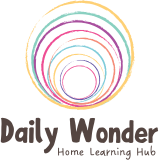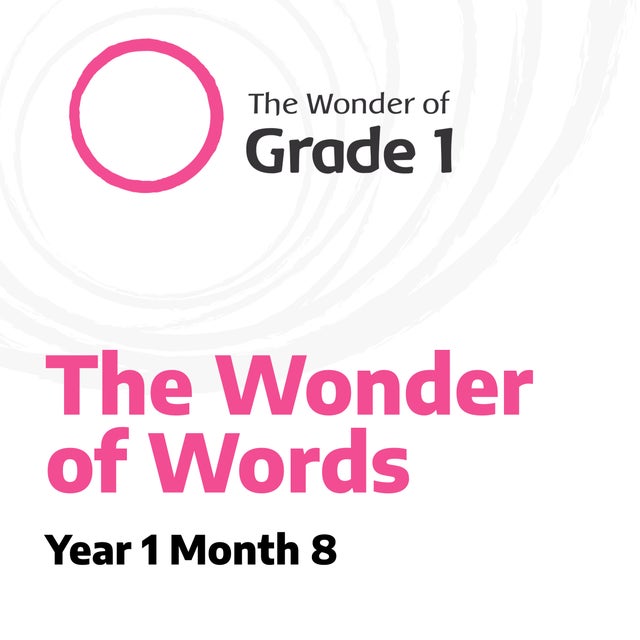- Unit Studies
- >
- Grade 1
- >
- Grade 1 Month 8 The Wonder of Words
Grade 1 Month 8 The Wonder of Words
SKU:
g1m8
CA$44.00
CA$44.00
Unavailable
per item
Your child will continue to work with decoding (sounding out) and encoding (spelling), as well as some of the following phonics rules: digraph consonants (sh, ch, th, wh, ng, oo), blends (s blends, r blends, l blends), r, controlled vowels, inflectional endings, silent e, compound words, and soft c and g. Multicultural stories form the basis of this unit.
This purchase is for a digital download (PDF) of 1 month of curriculum and includes access to our members-only area with supporting documents, videos, resources and community for one month.
Curriculum Areas/Learning Outcomes
Language Arts: Concept 1: Through listening and speaking, we connect with others and share our world. Connection: Your child will hear many cultural stories from a First People's perspective during the unit. By hearing the stories, they will have an opportunity to connect with the characters and events and themselves. Concept 2: Everyone has a unique story to share.
Connection: Your child will hear Indigenous stories from North America and Australia. Hearing the unique stories from the First Peoples of these places will inspire them to create their own version of these stories as a reflection of what they heard.
Social Studies: Concept: Healthy communities recognize and respect the diversity of individuals and care for the local environment.
Connection: You will have an opportunity to consider diversity by hearing stories from another land. What are the values represented in the stories? How are the characters connected to the environment?
Connection: Your child will hear Indigenous stories from North America and Australia. Hearing the unique stories from the First Peoples of these places will inspire them to create their own version of these stories as a reflection of what they heard.
Social Studies: Concept: Healthy communities recognize and respect the diversity of individuals and care for the local environment.
Connection: You will have an opportunity to consider diversity by hearing stories from another land. What are the values represented in the stories? How are the characters connected to the environment?
Curriculum Overview
Wow! Can you believe it? You are at Month 8 already, well done! As for the Literacy Program at DW (heavily influenced by The Roadmap to Literacy by Langley and Militzer-Kopperl), this is your fourth and final unit with a focus on literacy. You have introduced all the letters in an organic, artistic, holistic and integrated way and you have begun to unroll the 30+ phonics rules of the DW Literacy Program. You have already shared the first four rules: decoding CVC words, beginning digraphs (sh, ch, th, wh, ng), blends at the start and end of words, and you’ve shared the Silent E rule too. You will share four more rules this month to complete the first year of the Literacy Program. Rules this month are: inflectional endings (-s and -ed), r controlled vowels (ar, er, ir, or, ur), an intro to compound words, and the soft c and g. To encourage your child’s developing literacy you will collect words that they can read or are working on, to build a Word Bank. In Month 6 you created word cards for the four rules covered; you can use these as a starting point and build from there. Plans will give suggestions for what words to add; the Parent Preparation section will tell you what materials to use. Indigenous stories from North America and Australia will form the base of the living pictures for learning phonics rules and new words. Stories will be linked in each day’s plan and can be printed.
Parent Preparation
This month you will need the following word cards:
A reminder from Month 6: For each of the phonics rules, your child will create a page with the rule at the top where they can collect words that follow the rule, over time. Your word cards are for practicing daily with games. Be sure to incorporate them AFTER you bring the phonics rule. You can continue collecting words during all units of the year. You’ll also want to read each day’s plan ahead so you know what to expect and what story will be needed for the day. Whatever your practice for preparation, know that you’ll be working with verses, songs, rhyme collections, alliterative collections, and stories.
- Cards from Month 6: CVC (consonant, vowel, consonant) words that can be sounded out, example: dog, cat, sat, get, hit, etc.
- Beginning digraph word cards (SH, CH, TH, WH, NG). Use words that can be sounded out and don’t include other digraphs (oa, ea, ow, etc.), example: shut, shin, ship, chin, chip, this, that, thin, think, thank, what, when, why, long, song, ring, sing.
- Blends word cards, there are so many, try to have a variety (blends are when two consonants are together without a vowel between), example: scar, skin, slip, snip, smith, spell, stop, swim, bring, cram, drip, frog, grip, prim, trap, bland, clap, flap, glad, plop, split, strip, scrap, sprint, and then all the blends at the end of words such as: hand, lamp, lint, sink, fist, lisp, and on and on.
- Silent E word cards, this is for words that end in E which makes the previous vowel long, for example: name.
A reminder from Month 6: For each of the phonics rules, your child will create a page with the rule at the top where they can collect words that follow the rule, over time. Your word cards are for practicing daily with games. Be sure to incorporate them AFTER you bring the phonics rule. You can continue collecting words during all units of the year. You’ll also want to read each day’s plan ahead so you know what to expect and what story will be needed for the day. Whatever your practice for preparation, know that you’ll be working with verses, songs, rhyme collections, alliterative collections, and stories.

